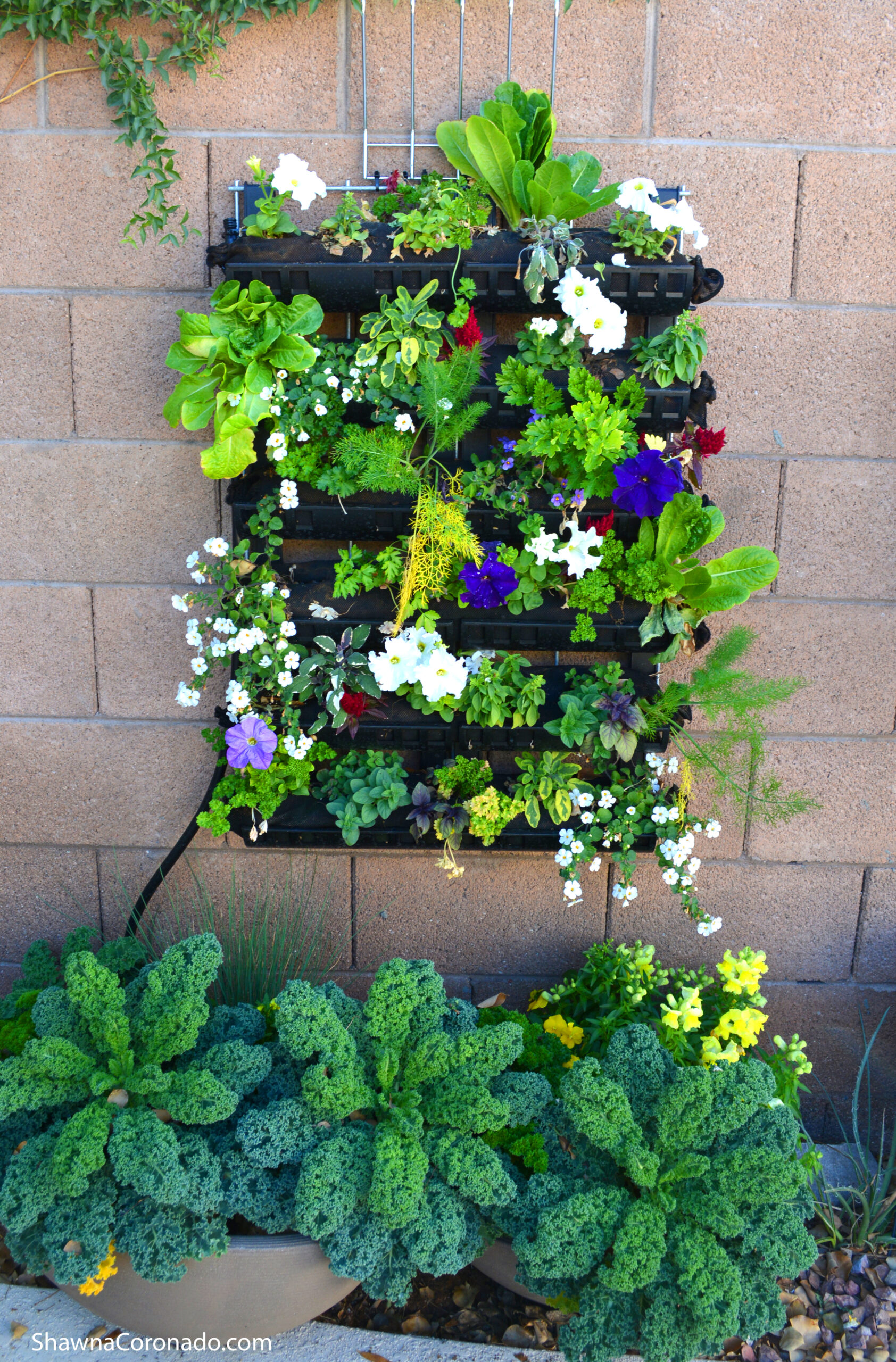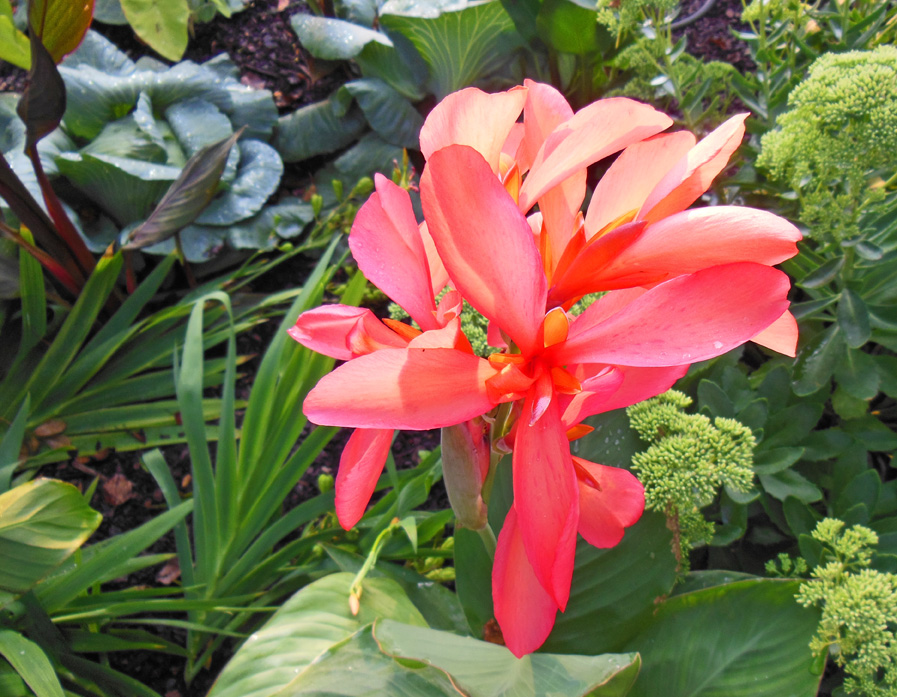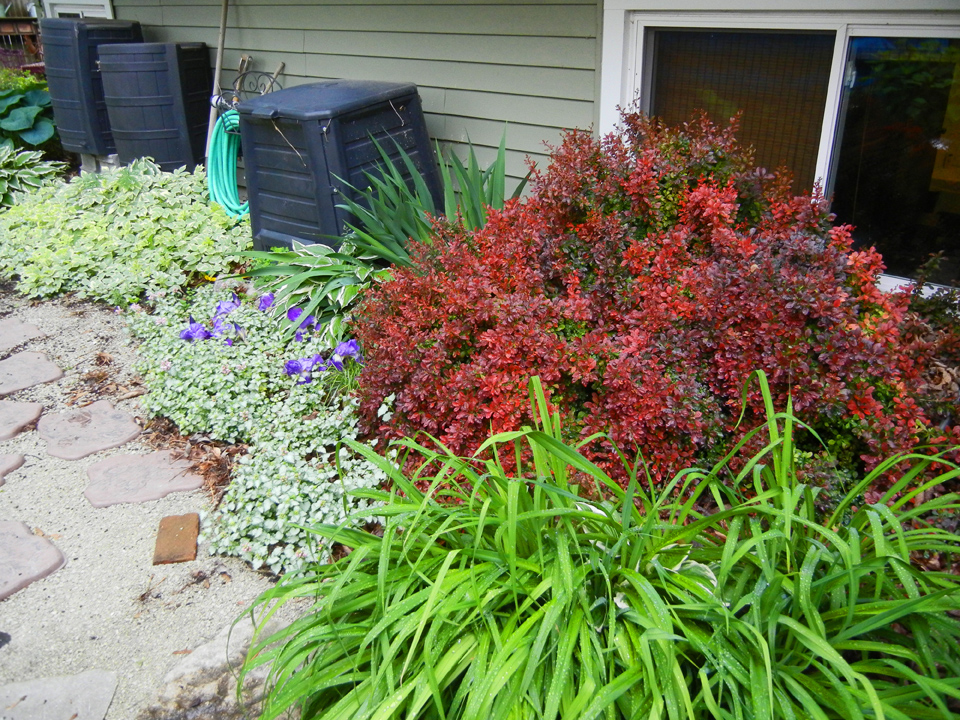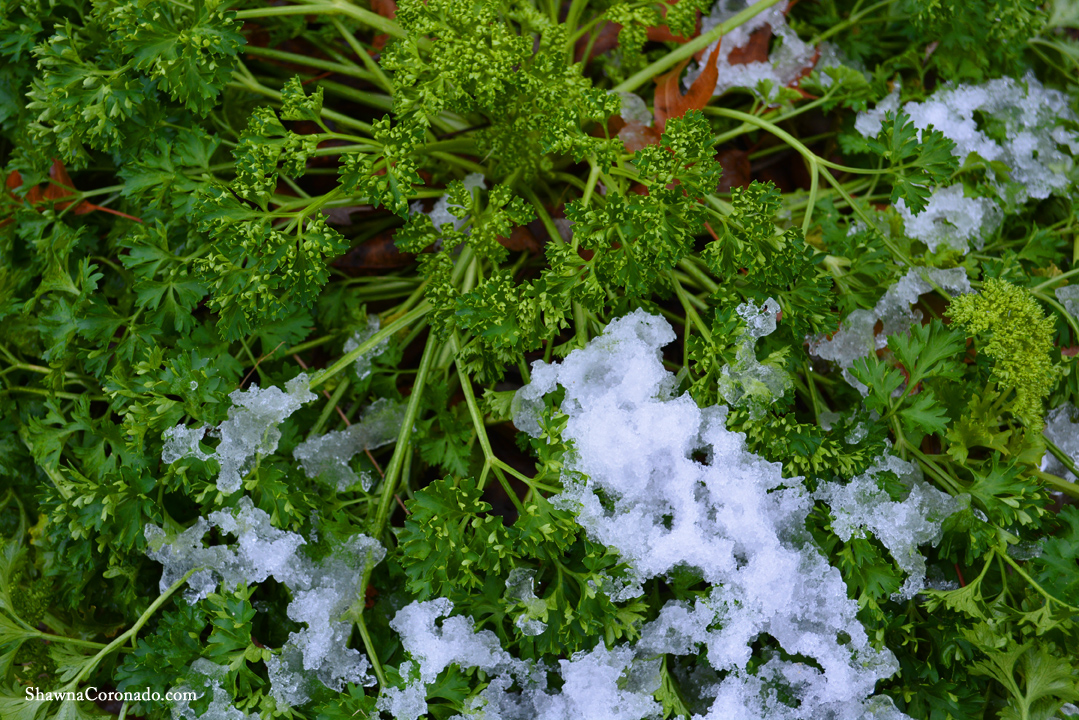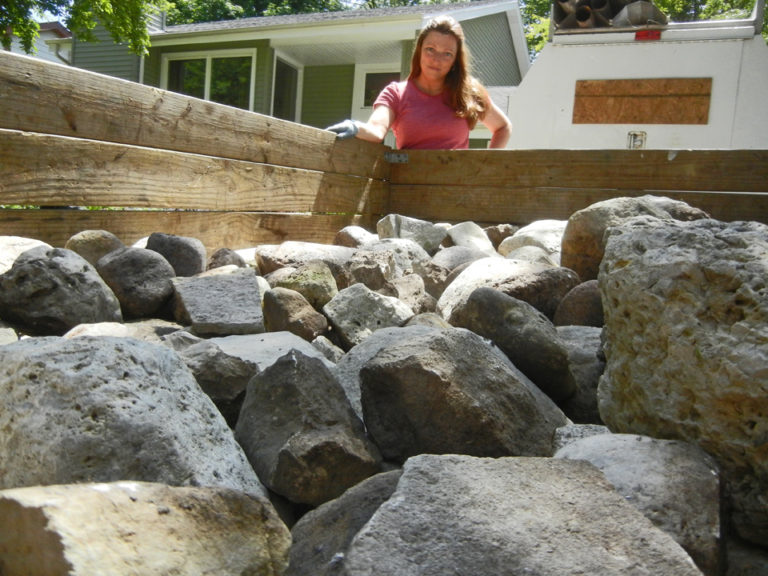Living Wall Garden Quick Growing Guide
Living walls are small space garden solutions. Have a small space but want a big garden? The secret growing tool which can support a lot of plants in a small space is a living wall. With a living wall garden system, you can grow 24, 48, 64 plants. All easily within 2 square feet of ground space. The higher the growing system, the more plants you can plant. Take the traditional square foot garden and then go up along the wall from the ground.
You will also be rewarded with an amazing conversation piece that can transform an ugly wall into a beautiful garden solution for your home. The below quick-growing guide tips will give you a head start.
RECOMMENDED TOOLS USED FOR GROWING THIS LIVING WALL –
- Potting Soil – Beyond Peat Peat-free Potting Soil
- Organic Fertilizer – Espoma Organic Plant Tone All-Purpose Fertilizer
- Rain Wand Watering Tool – Dramm One Touch Rain Wand or Dramm Rain Select Wand
- Living Wall Unit – The Varden Living Wall by Verdtech (USE CODE “CORONADO2021” & GET 5% OFF)
- Plants – I shopped local at Treeland Nurseries in Mesa, Arizona
- My Living Wall How To Book – Grow A Living Wall: Create Vertical Gardens With Purpose
List of Benefits of Growing a Living Wall
Garden walls easily support flowers, vegetables, herbs, or tropical plants, and you can grow in shade or sun conditions. Most significantly, the benefits to gardening with a living wall is that living walls are –
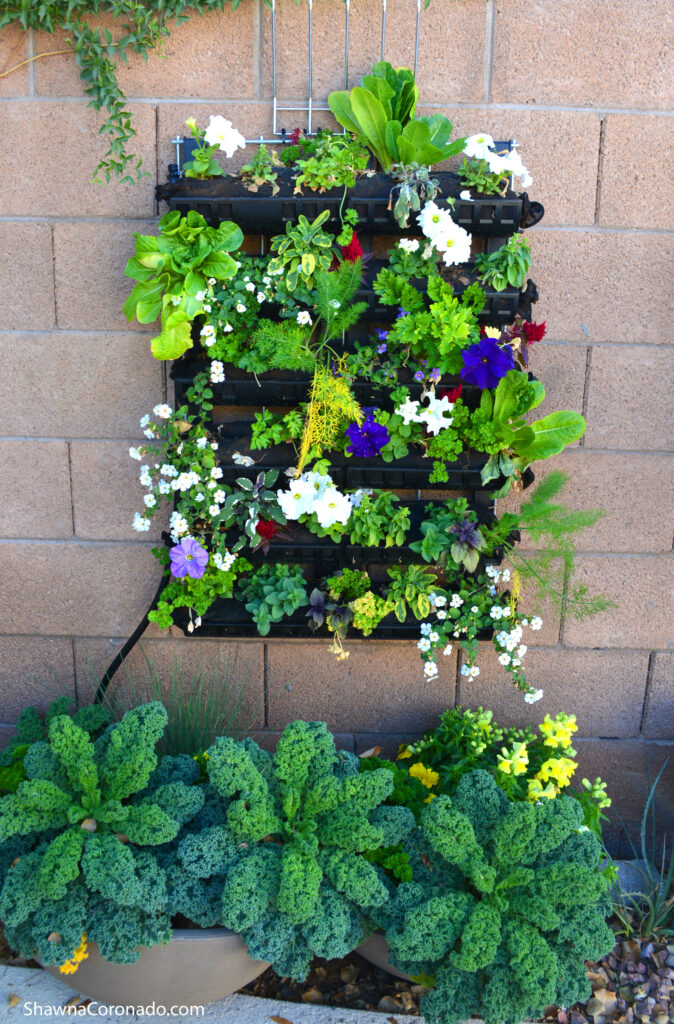 Beautiful at Eye-Level – Plan your living wall well and you will have a truly beautiful garden design at eye-level. Keep your eye up instead of always looking down on a ground garden. This can help introduce a more stimulating visual solution.
Beautiful at Eye-Level – Plan your living wall well and you will have a truly beautiful garden design at eye-level. Keep your eye up instead of always looking down on a ground garden. This can help introduce a more stimulating visual solution.- Weed-free & Water saving – Living walls are mostly weed free and if you install a drip irrigation system, making watering automated. Ultimately drip irrigation can also be immensely water saving.
- Less than 2 Feet of Space – Living walls can fit in less than 2 feet of ground space. This offers an incredible solution for small spaces.
- Maintenance is Easy – Living wall maintenance is reduced to trimming out brown pieces. You might replace a few plants here and there throughout the season. This makes it simple to maintain. No crawling on the ground or hurting your back digging.
- Living Walls are Therapeutic – Living Walls are very versatile. They make a great therapeutic garden solution for virtually any age group or physical condition.
Five Easy Steps on How to Grow a Living Wall
Consider the steps below when creating a wall system. Living walls have been a part of my gardens for a decade and maintenance is simple. Installing growing systems that take up little ground space is a magnificent design choice that is very easy to maintain.
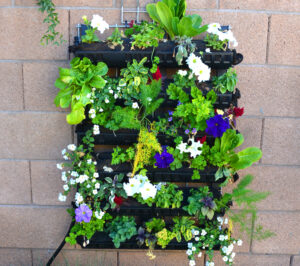 Build or obtain a growing unit – This can be as simple as placing window box brackets on a wall. Then place window boxes directly on the wall brackets. I find premade growing units for planting more attractive and easier to plant up in general.
Build or obtain a growing unit – This can be as simple as placing window box brackets on a wall. Then place window boxes directly on the wall brackets. I find premade growing units for planting more attractive and easier to plant up in general.
This season I am experimenting with a new system, The Varden Living Wall, which features growing socks. Fill the vardensoks with soil and fertilizer. Then cut holes for planting. Attach to an irrigation line. It is that easy (shown in photo – instructions for growing below). Grow vegetables, annuals, tropical plants, or herbs in the sock system with great success.
WHERE TO FIND THE SYSTEM – The Varden Living Wall by Verdtech (USE CODE “CORONADO2021” & GET 5% OFF ALL PURCHASES)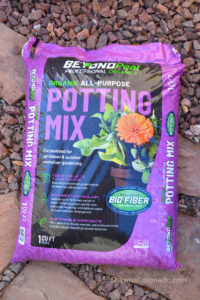 Use a moisture retentive soil mix – Dependent upon your plant’s moisture needs, you could simply use a natural potting soil. One of my favorite wall planting formulas is one-part potting soil, one-part rotted composted manure, and one-part plain compost. Mix in organic fertilizer prior to planting.
Use a moisture retentive soil mix – Dependent upon your plant’s moisture needs, you could simply use a natural potting soil. One of my favorite wall planting formulas is one-part potting soil, one-part rotted composted manure, and one-part plain compost. Mix in organic fertilizer prior to planting.
HERE IS THE SOIL I USED THIS SEASON – Beyond Peat™ Professional Organics Potting Mix and Beyond Peat™ Professional Organics Raised Bed Mix. (This soil is peat-free, pre-mixed, and it includes organic fertilizer.)- Plants – Have great success planting a wall garden. It is important to get the right plants for the right growing conditions. Understand temperature, sun, water, and soil needs for the plants you install before you install them. The living wall in this image has a mix of herbs, vegetables, and annual flowers.
WHERE I GOT MY PLANTS FOR THIS PROJECT – Treeland Nurseries in Mesa, Arizona. (I love Treeland – excellent service, good variety, and quality plants!)
- Sunlight – Every plant needs some level of sunlight. Whether full sun, full shade, or somewhere in the middle, it is important to place plants where they can obtain an adequate and appropriate level of sunshine.
- Water – Most important is the need to water the living wall garden consistently. Regularly check and water your wall system or have the wall connected to an irrigation system. My preference for watering vertical gardens if they are not plugged into an irrigation system is the Dramm One Touch Rain Wand or Dramm Rain Select Wand. Watering wands give a rain shower affect and help the soil absorb more water.
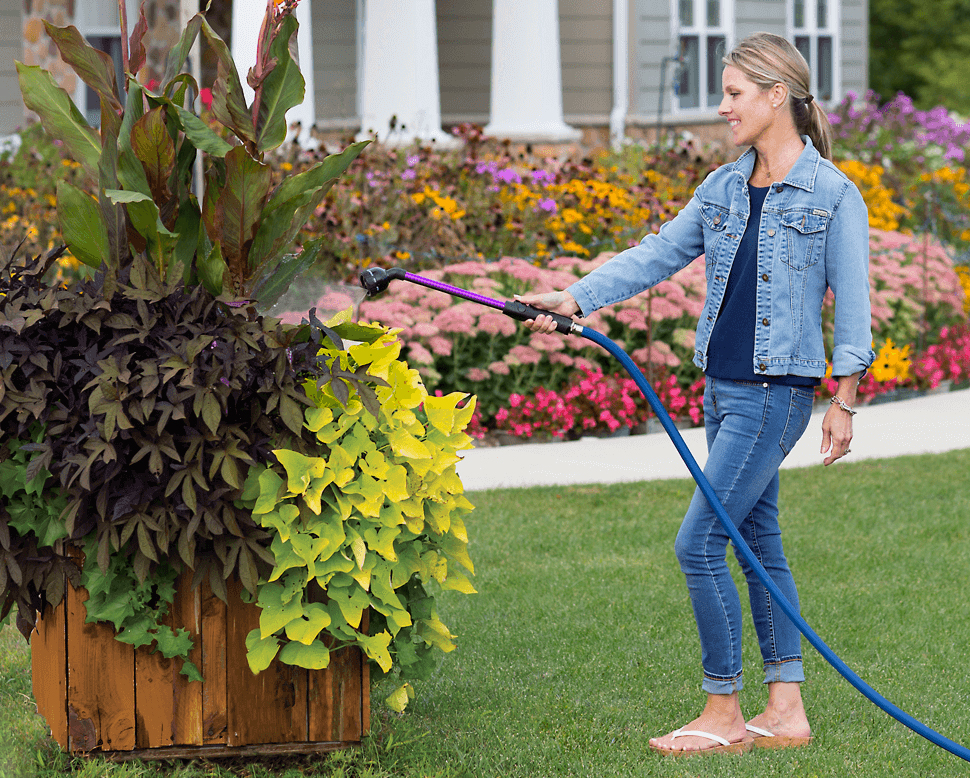
Why Living Wall Gardens are Low Maintenance

Wall gardens are super low-maintenance. No weeds are a great benefit. If you have an irrigation system installed as you see here with the Varden Living Wall unit (USE CODE “CORONADO2021” & GET 5% OFF ALL PURCHASES), you spend less time watering. You can have all your water needs set on a timer. Watering consistently produces a more successful display of plants.
Maintenance Tip for Wall Gardens
Maintenance for a vertical garden includes watering, fertilizing, leaf cleaning, and harvesting. Checking for and removing brown leaves and stems throughout the season is an aspect beyond regular watering. If you are growing a culinary wall, you’ll need to harvest the vegetables.
In order to harvest the vegetables and still keep a beautiful vertical garden, simply harvest in thirds. Pick one-third to two-thirds of your leaf green plant at a time, then let the plants produce a second or third harvest throughout the season.
How to Assemble The Varden Living Wall Kit
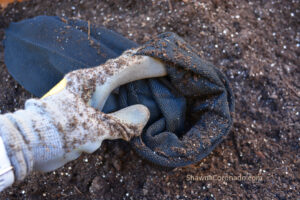
First Step – Hang It – Hang the Varden Living Wall on a wall by following package directions for attachment, or by using straps. Be sure to align the irrigation spaghetti lines so that they rest on the sock support pockets.
Second Step – Sock It – Pull out the special Vardensoks built for the living wall unit and fill the socks with fertilized potting soil.
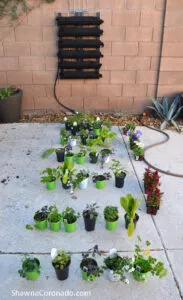
Third Step – Zip It – Using the zip ties included, zip up the socks and place the soil-filled socks in the specially built pockets on top of the spaghetti lines.
Fourth Step – Drip It – Attach the half-inch watering line to a drip system with a timer.
Fifth Step – Design It – Layout plants in the order preferred for planting. How many plants go in each sock is determined by how large the root balls are for the various plants. I used herbs, vegetables, and annual flowers.
Sixth Step – Plant It – Cut holes in the top of the socks. Holes should be just small enough to fit the root balls of the various plants. Large holes cause the soil to drip out, so be cautious when cutting. Plant the plants in the order that is most attractive.
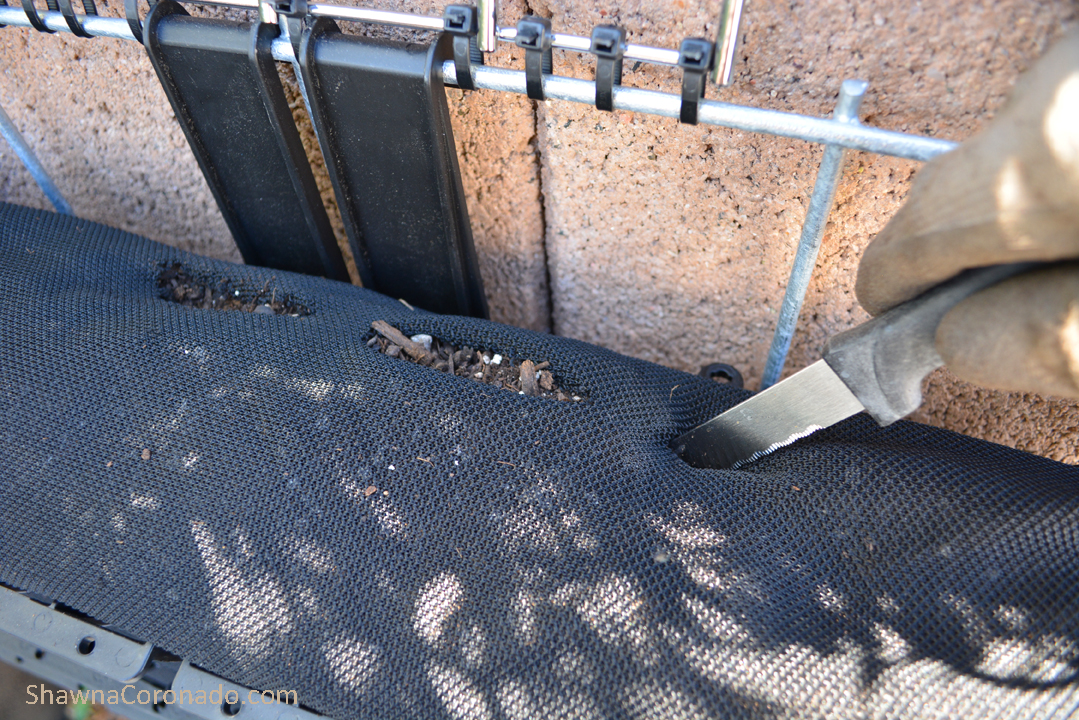
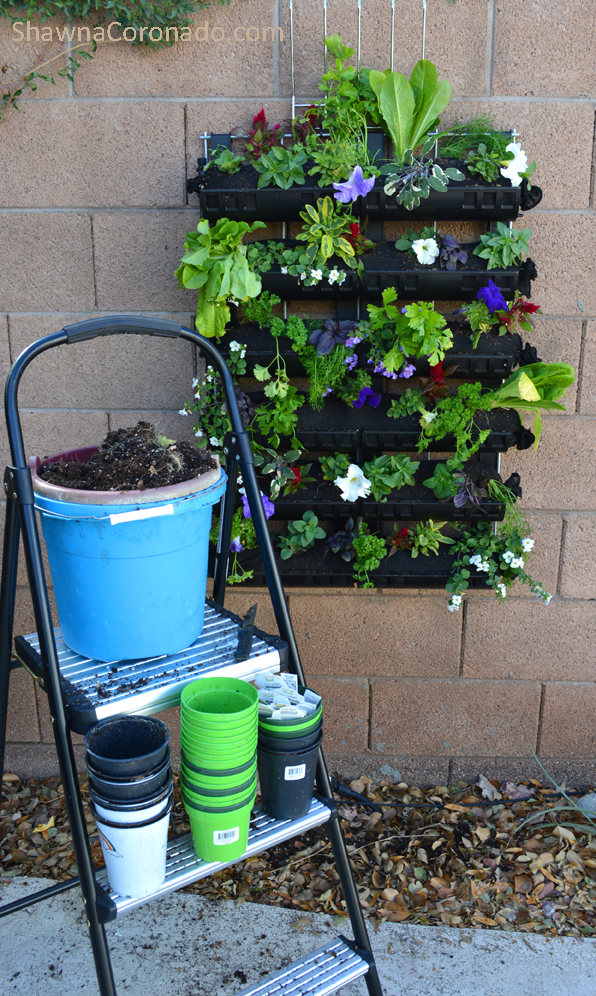
Best Soil for a Living Wall Garden? Use Peat Free Soil and Compost!
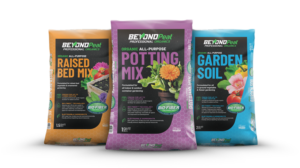
The big goal this season is to garden my gardens with peat-free soil. It has become a big goal for me this season as it is a healthier choice for your lungs.
My soil will be Beyond Peat™ Professional Organics Potting Mix and Beyond Peat™ Professional Organics Raised Bed Mix. I will use it in my vegetable and container gardens this season.
Environmental Concerns with Peat Products
There are many environmental concerns with peat bogs (see photo below). One particularly important issue is peatlands are known to store approximately one-third of the world’s soil carbon. Using an OMRI® certified organic product which is touted as a sustainable substitute for peat moss a smart choice.
Gardeners Have a Choice!
If we harvest large amounts of a very slow-growing product for the world’s gardens, the peatlands do not have time to regenerate. We, gardeners, are destroying large swathes of a natural resource that is irreplaceable when we use peat in our gardens. Use an environmentally friendly product in a living wall garden as a soil amendment.
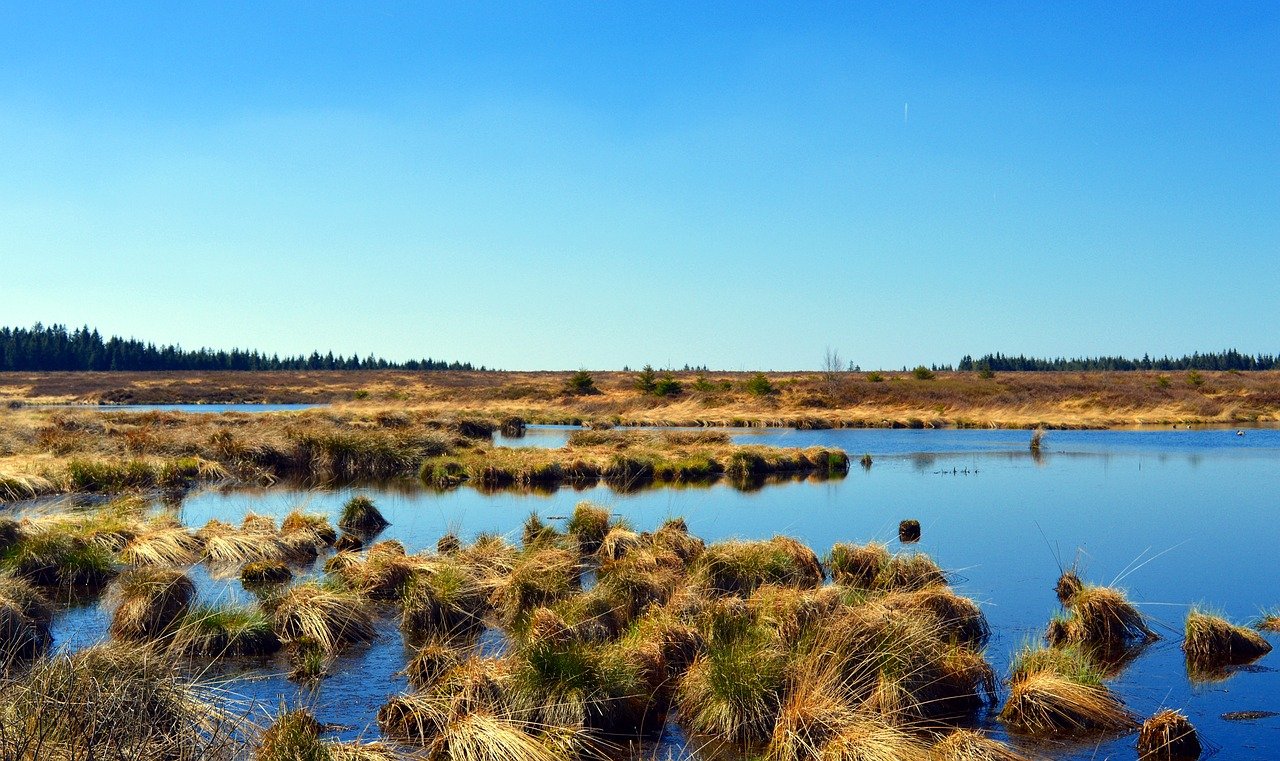
Growing a living wall garden is an amazingly rewarding, therapeutic, and beautiful garden solution for your home. Make your own organic vertical wall unit as a fun garden project for the whole family.
